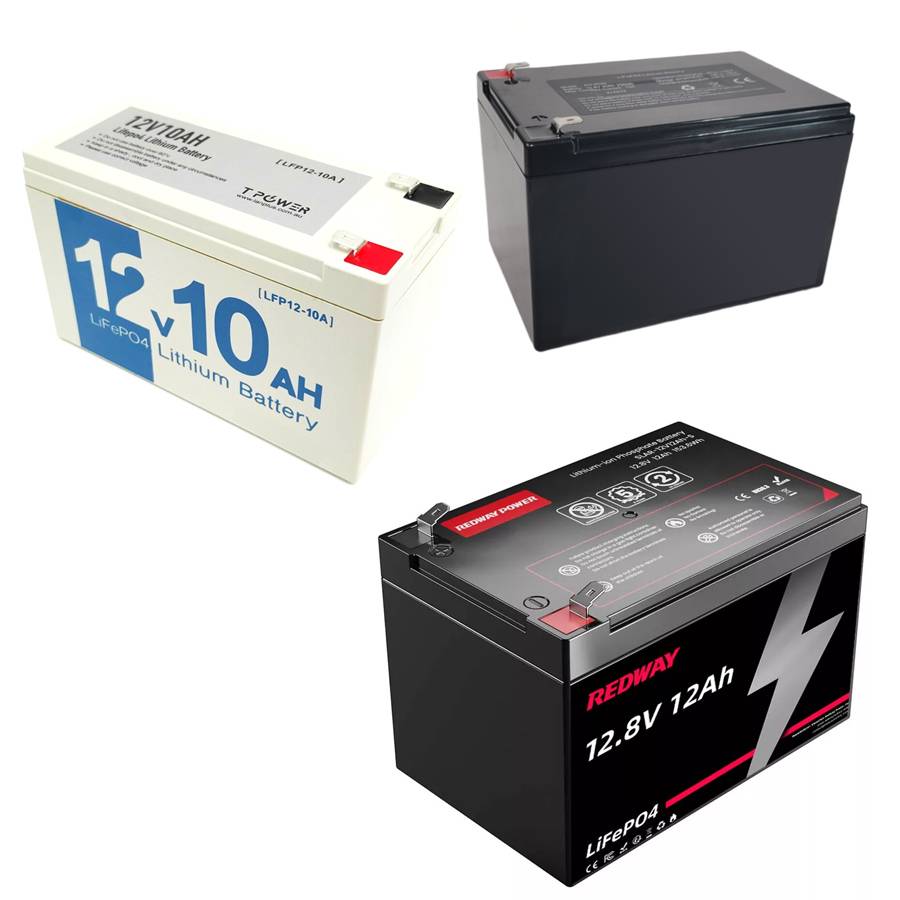- Forklift Lithium Battery
-
48V
- 48V 210Ah
- 48V 300Ah
- 48V 420Ah (949 x 349 x 569 mm)
- 48V 420Ah (950 x 421 x 450 mm)
- 48V 456Ah
- 48V 460Ah (830 x 630 x 590 mm)
- 48V 460Ah (950 x 421 x 450 mm)
- 48V 460Ah (800 x 630 x 600 mm)
- 48V 460Ah (820 x 660 x 470 mm)
- 48V 500Ah
- 48V 560Ah (810 x 630 x 600 mm)
- 48V 560Ah (950 x 592 x 450 mm)
- 48V 600Ah
- 48V 630Ah
-
48V
- Lithium Golf Cart Battery
- 12V Lithium Battery
12V 150Ah Lithium RV Battery
Bluetooth App | BCI Group 31
LiFePO4 Lithium
Discharge Temperature -20°C ~ 65°C
Fast Charger 14.6V 50A
Solar MPPT Charging - 24V Lithium Battery
- 36V Lithium Battery
- 48V Lithium Battery
-
48V LiFePO4 Battery
- 48V 50Ah
- 48V 50Ah (for Golf Carts)
- 48V 60Ah (8D)
- 48V 100Ah (8D)
- 48V 100Ah
- 48V 100Ah (Discharge 100A for Golf Carts)
- 48V 100Ah (Discharge 150A for Golf Carts)
- 48V 100Ah (Discharge 200A for Golf Carts)
- 48V 150Ah (for Golf Carts)
- 48V 160Ah (Discharge 100A for Golf Carts)
- 48V 160Ah (Discharge 160A for Golf Carts)
-
48V LiFePO4 Battery
- 60V Lithium Battery
-
60V LiFePO4 Battery
- 60V 20Ah
- 60V 30Ah
- 60V 50Ah
- 60V 50Ah (Small Size / Side Terminal)
- 60V 100Ah (for Electric Motocycle, Electric Scooter, LSV, AGV)
- 60V 100Ah (for Forklift, AGV, Electric Scooter, Sweeper)
- 60V 150Ah (E-Motocycle / E-Scooter / E-Tricycle / Tour LSV)
- 60V 200Ah (for Forklift, AGV, Electric Scooter, Sweeper)
-
60V LiFePO4 Battery
- 72V~96V Lithium Battery
- Rack-mounted Lithium Battery
- E-Bike Battery
- All-in-One Home-ESS
- Wall-mount Battery ESS
-
Home-ESS Lithium Battery PowerWall
- 24V 100Ah 2.4kWh PW24100-S PowerWall
- 48V 50Ah 2.4kWh PW4850-S PowerWall
- 48V 50Ah 2.56kWh PW5150-S PowerWall
- 48V 100Ah 5.12kWh PW51100-F PowerWall (IP65)
- 48V 100Ah 5.12kWh PW51100-S PowerWall
- 48V 100Ah 5.12kWh PW51100-H PowerWall
- 48V 200Ah 10kWh PW51200-H PowerWall
- 48V 300Ah 15kWh PW51300-H PowerWall
PowerWall 51.2V 100Ah LiFePO4 Lithium Battery
Highly popular in Asia and Eastern Europe.
CE Certification | Home-ESS -
Home-ESS Lithium Battery PowerWall
- Portable Power Stations
We accept OEM, ODM and SKD orders
Fish Finder Lithium Batteries Manufacturer Wholesale
Redway Power
Fish Finder Lithium Batteries, One-Stop Solution
Redway Power leads in crafting Fish Finder Lithium Batteries, exclusively designed for powering fish finders with precision. These rechargeable lithium-ion batteries, designed by Redway, serve as the essential power source for fish finder components, ensuring high energy density, lightweight design, and extended runtimes.
Tailored for anglers and fishermen, Redway Power's Fish Finder Lithium Batteries enhance the overall performance and efficiency of fish finders, providing a reliable and portable power solution. With a commitment to excellence, these batteries exemplify Redway Power's dedication to advancing fishing equipment, ensuring that fish finders powered by their lithium batteries deliver accurate and dependable underwater insights for anglers.
Redway Power for Batteries OEM/ODM
Best Fish Finder Lithium Batteries Manufacturer 2024
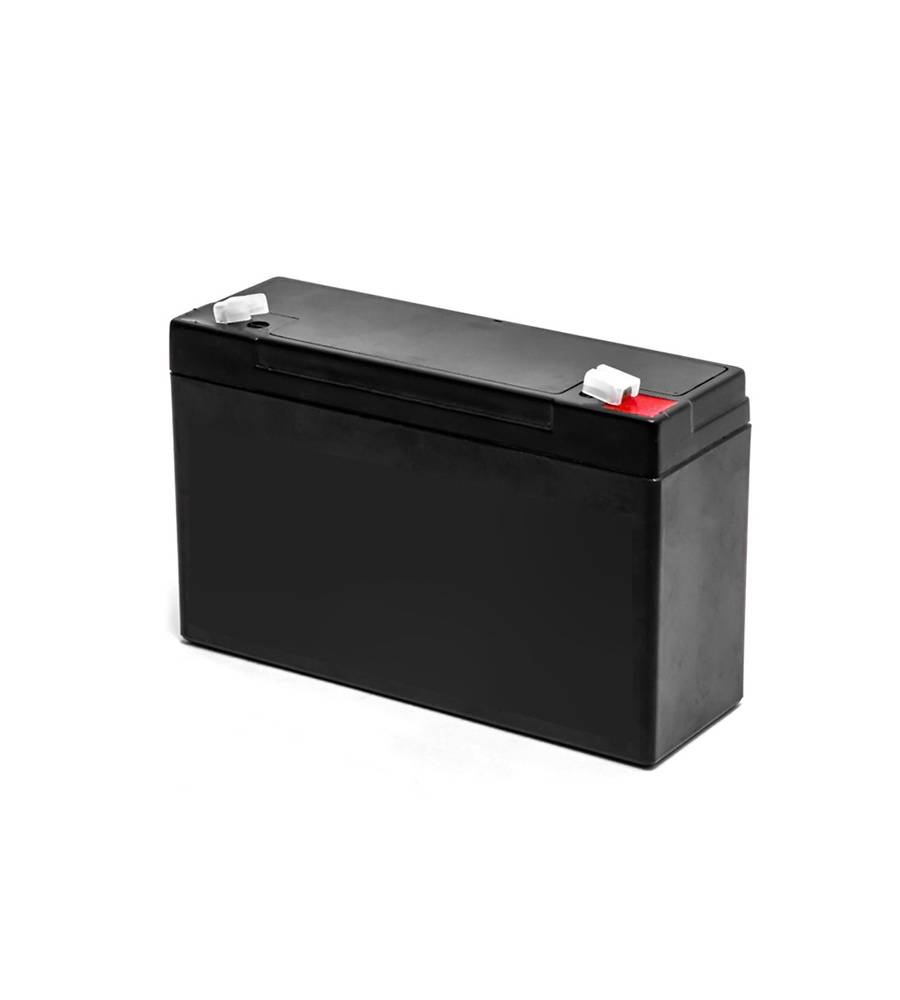
6V 12Ah
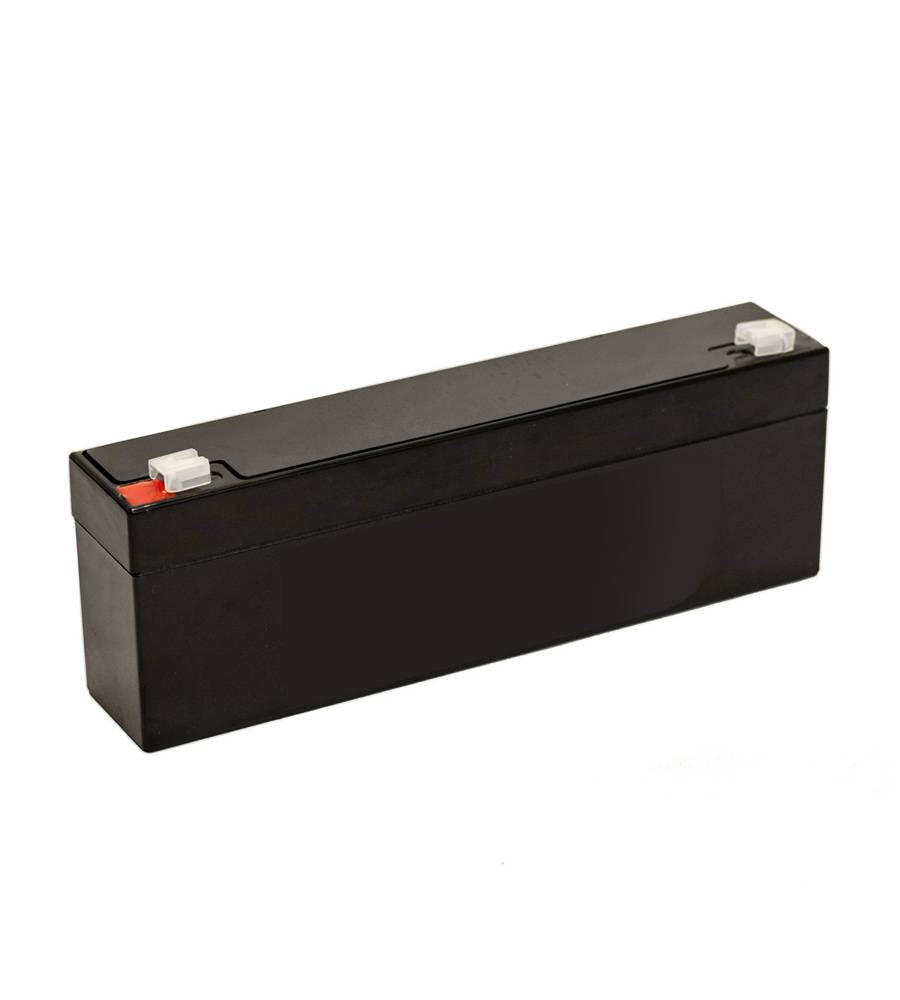
12V 2Ah
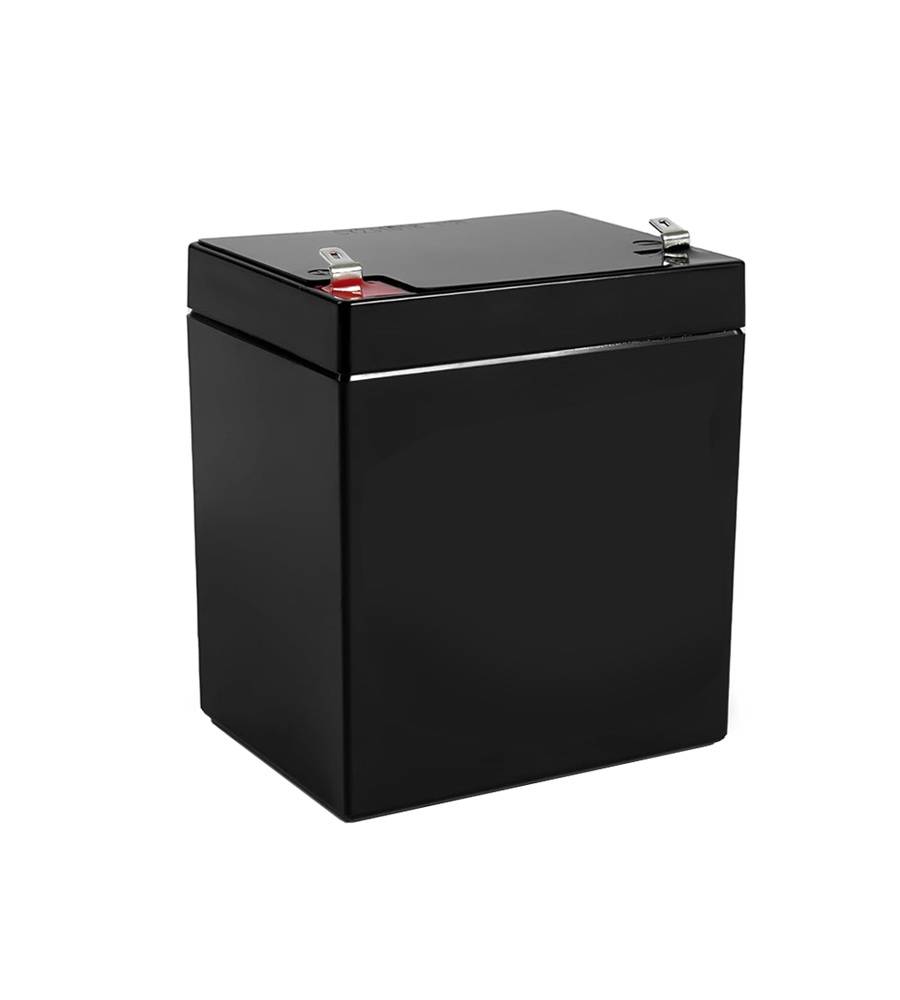
12V 4Ah
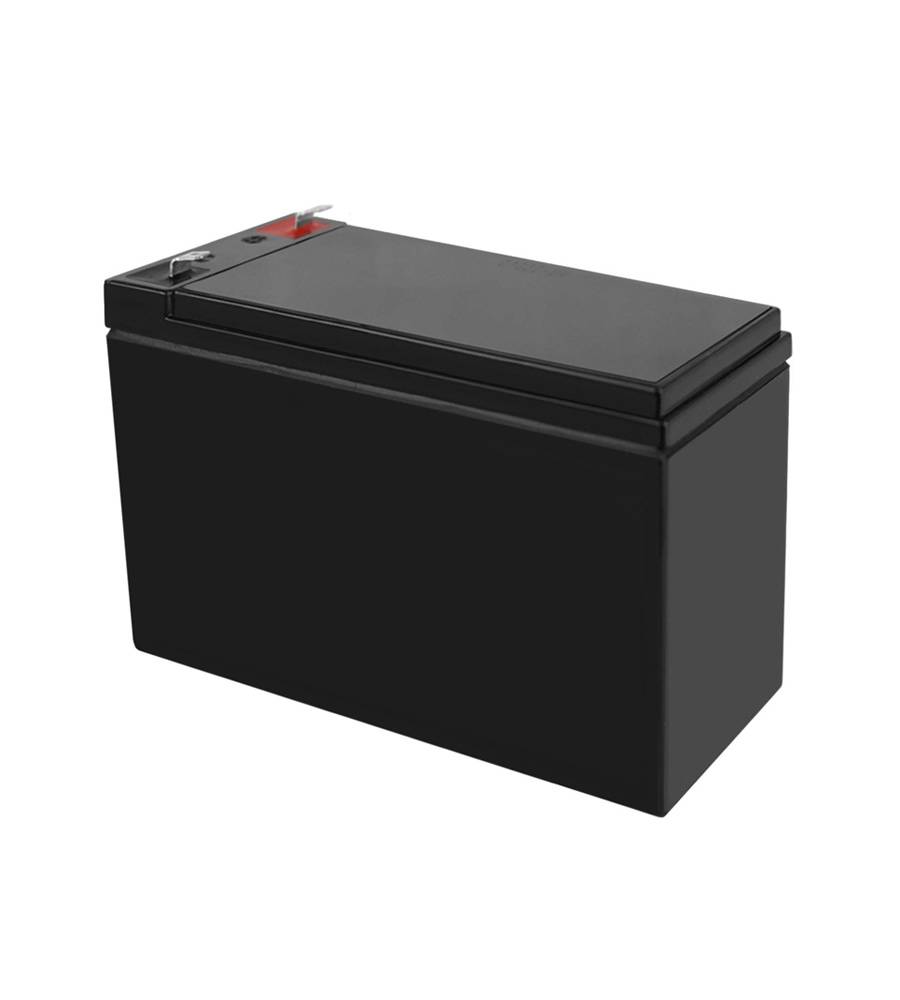
12V 8Ah
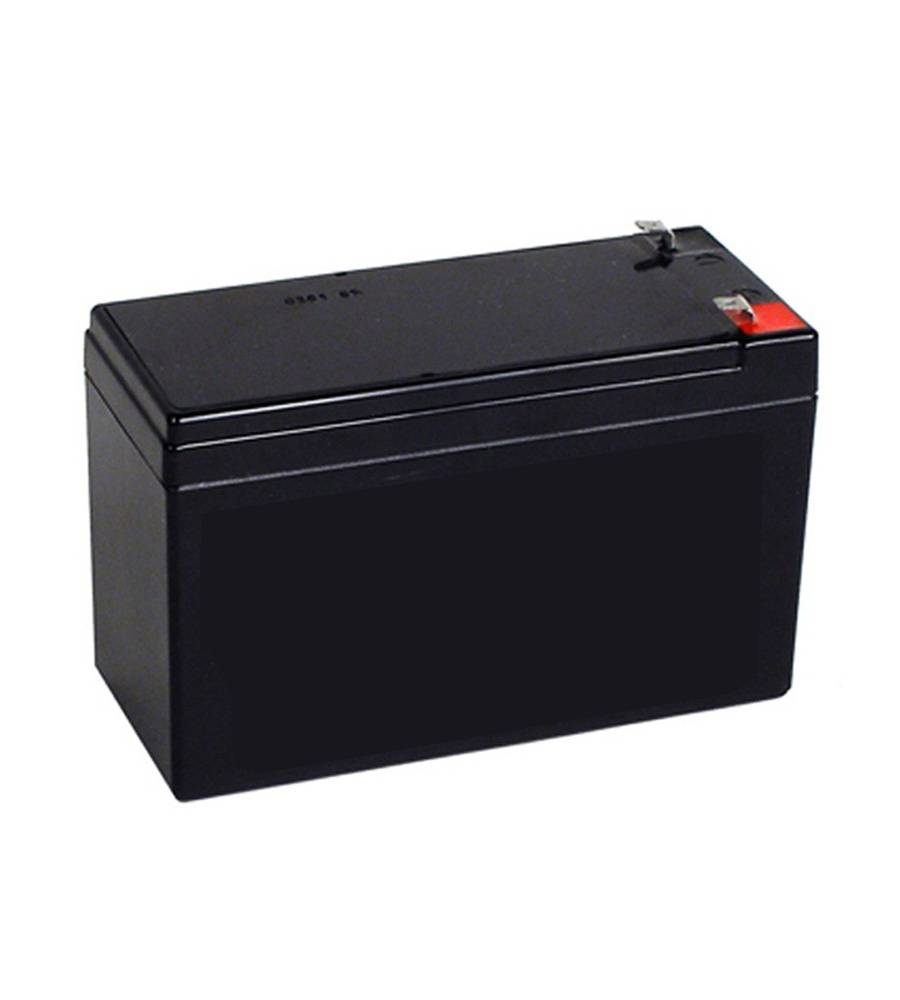
12V 8Ah
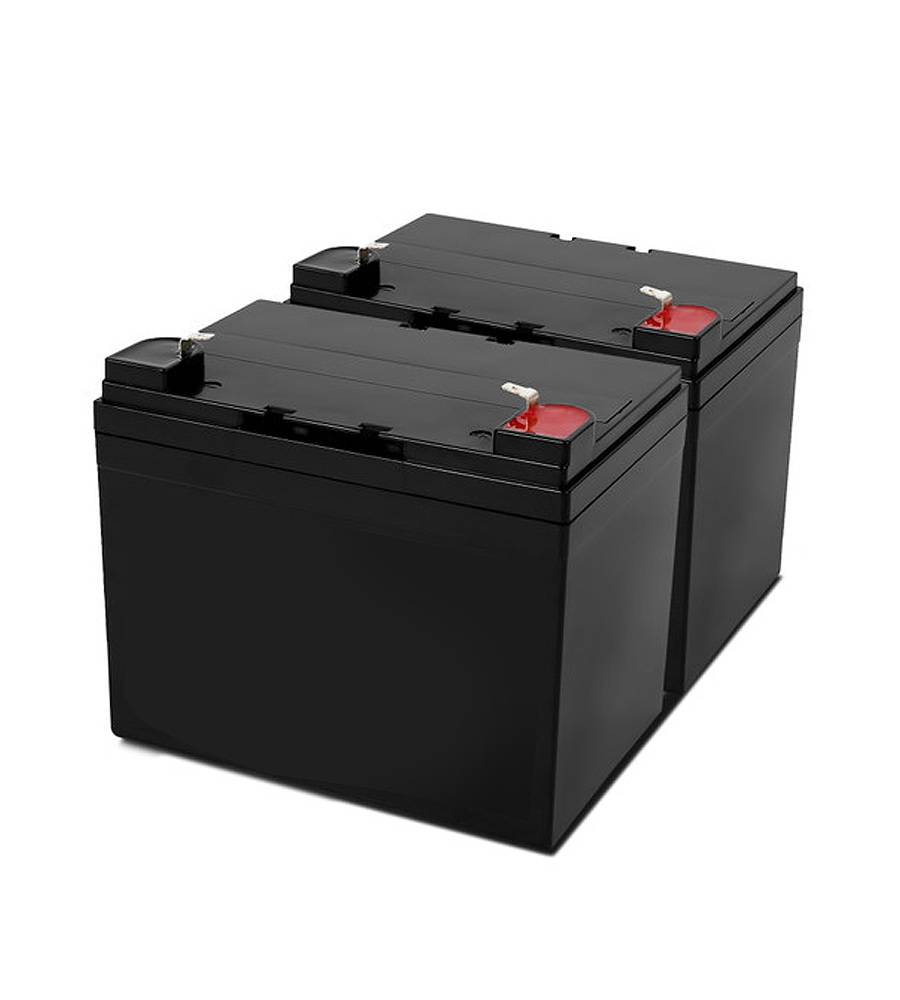
12V 12Ah
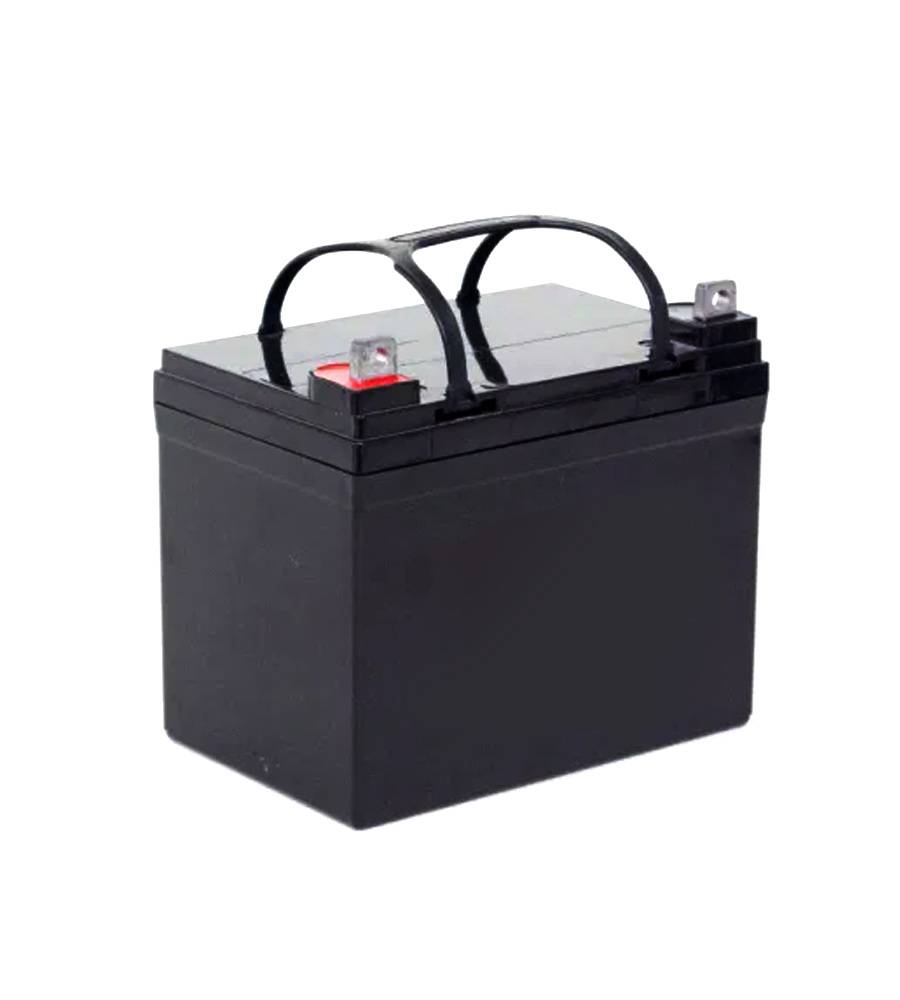
12V 30Ah
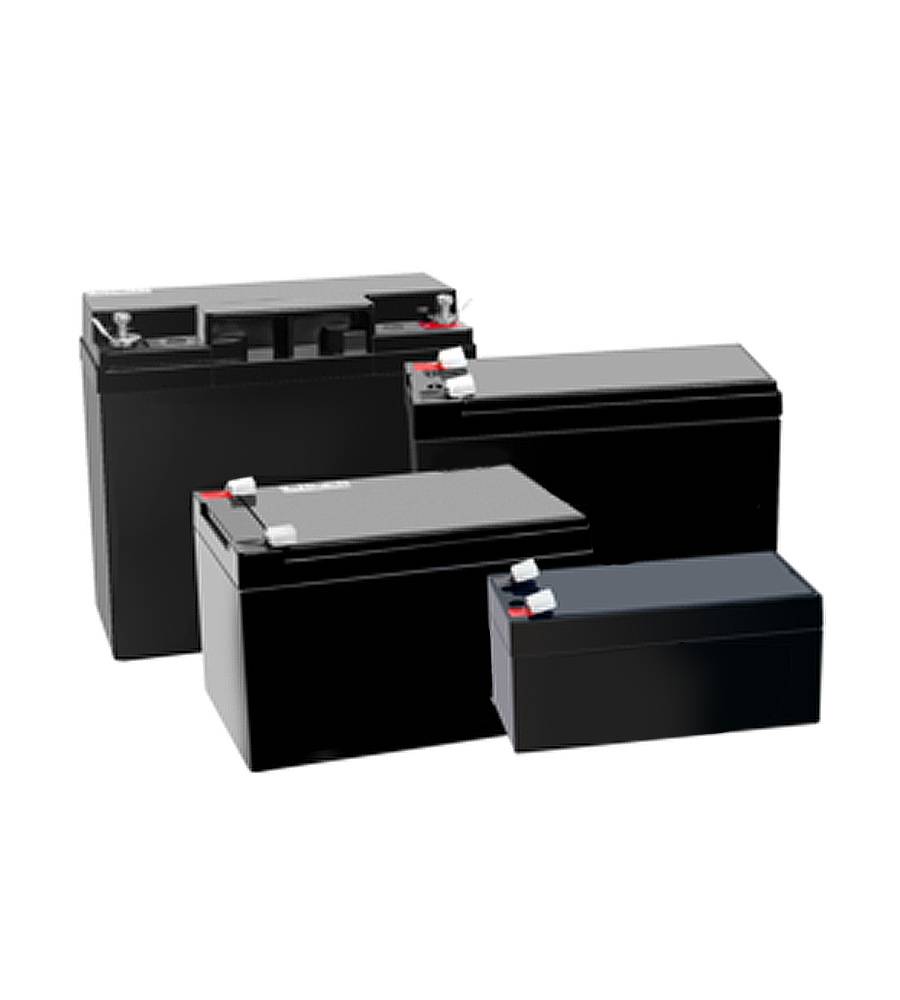
12V Series
Fish Finder Lithium Batteries Wholesale
Redway Power is a leading manufacturer of fish finder lithium batteries for wholesale. Designed exclusively for fish finders, these rechargeable lithium-ion batteries provide a reliable and portable power solution. With high energy density, lightweight design, and extended runtimes, Redway Power's fish finder lithium batteries enhance the performance and efficiency of fish finders. Tailored for anglers and fishermen, these batteries deliver accurate and dependable underwater insights. Trust Redway Power for all your fish finder lithium battery needs.
What is the wholesale price of lithium battery?
You can click contact us or phone call us. We will give you multiple options of price.
Is Redway Power a trading company or factory?
Redway Power is a company with its own factory, integrating research, development, production, and sales.
How about the quality of Redway's LiFePo4 Battery product?
Redway Power boasts over 12 years of experience in LiFePO4 battery production and is an authorized supplier for CATL and BYD.
Can you do an OEM/ODM project?
Yes, we have engineers available to assist in designing and developing any related products.
What’s your MOQ?
MOQ varies according to battery voltage and capacity.
What payment terms can we accept?
We accept TT/Paypal/West Union, etc.
Fish Finder Lithium Batteries Knowledge
Fish Finder Lithium Batteries are essential for powering fish finders and ensuring reliable performance on the water. Lithium batteries offer numerous advantages, including high energy density, lightweight design, and long-lasting power. They are specifically designed to meet the demands of fish finder devices, providing extended runtimes and accurate readings. When choosing a fish finder lithium battery, consider factors such as capacity, voltage, and compatibility with your fish finder model. Invest in a high-quality lithium battery to enhance your fishing experience and maximize the effectiveness of your fish finder.
Why is low-maintenance a desirable feature in a fish finder battery?
A low-maintenance feature is desirable in a fish finder battery because it reduces the need for frequent maintenance and ensures reliable performance. With a low-maintenance battery, users can spend more time enjoying their fishing experience rather than worrying about battery maintenance.

- Reduced Maintenance: A low-maintenance battery minimizes the need for frequent upkeep, saving time and effort.
- Reliable Performance: With a low-maintenance battery, users can rely on consistent and dependable performance during their fishing trips.
A low-maintenance feature in a fish finder battery allows users to focus more on enjoying their fishing experience and less on battery maintenance, ensuring reliable performance throughout their outings.
How does the lightweight nature of lithium batteries benefit small boat owners?
The lightweight nature of lithium batteries benefits small boat owners in multiple ways. It reduces the overall weight of the boat, enhancing efficiency and maneuverability. The high power-to-weight ratio of lithium batteries improves performance and extends operating times. Additionally, their compact size creates more space on the boat for other equipment or storage needs.
- Enhanced Efficiency: The lightweight nature of lithium batteries reduces the overall weight of the boat, making it more efficient and easier to maneuver.
- Improved Performance: Lithium batteries offer a higher power-to-weight ratio, resulting in better performance and longer operating times for small boats.
- Space Optimization: The compact size of lithium batteries allows for more space on the boat, accommodating additional equipment or storage needs.
Small boat owners benefit from the lightweight nature of lithium batteries, as it enhances efficiency, improves performance, and optimizes space on the boat.
How can you calculate the energy needs of your fish finder?
To calculate the energy needs of your fish finder, multiply the power consumption by the duration of usage. Consider the power rating of the fish finder and the power source being used to estimate the energy requirements accurately.
- Power Consumption: Estimate the power consumption of the fish finder, which is typically provided in the device’s specifications.
- Usage Duration: Determine the duration of usage for the fish finder, considering the typical time it will be in operation.
- Energy Calculation: Multiply the power consumption by the duration of usage to calculate the energy needs of the fish finder accurately.
By estimating the power consumption and multiplying it by the duration of usage, one can calculate the energy needs of a fish finder. Considering factors like power rating and usage duration helps ensure accurate estimation.
What key features should you look for in a fish finder battery?
When choosing a fish finder battery, key features to consider include battery capacity for long-lasting power, voltage compatibility with the fish finder unit, durability for reliable performance, and portability for convenience during fishing trips.
- Battery Capacity: Look for a battery with sufficient capacity to provide long-lasting power during fishing trips.
- Voltage Compatibility: Ensure the battery is compatible with the voltage requirements of the fish finder unit for optimal performance.
- Durability: Consider a battery that is durable and reliable, capable of withstanding the conditions encountered during fishing activities.
- Portability: Look for a battery that is lightweight and easy to carry, providing convenience during fishing trips.
When choosing a fish finder battery, it is important to consider key features such as battery capacity, voltage compatibility, durability, and portability. These features ensure sufficient power, compatibility, reliability, and convenience during fishing trips.
What are the pros and cons of sealed lead-acid batteries for fish finders?
Sealed lead-acid batteries for fish finders have pros and cons. They are cost-effective, durable, and can withstand harsh conditions. However, they are heavier and require regular maintenance, such as checking electrolyte levels and ensuring proper ventilation.
- Pros: These batteries are cost-effective, durable, and can withstand harsh conditions, making them suitable for fishing environments.
- Cons: Sealed lead-acid batteries are heavier than other battery types, which may impact portability. They also require regular maintenance, such as checking electrolyte levels and ensuring proper ventilation.
While sealed lead-acid batteries offer cost-effectiveness and durability for fish finders, their heavier weight and maintenance requirements should be considered. Understanding the pros and cons can help users make an informed decision when selecting a battery for their fish finder.
What are the different types of batteries that can be used to power a fish finder?
Fish finders can be powered by different types of batteries, including sealed lead-acid batteries, lithium-ion batteries, and rechargeable batteries. The choice of battery depends on factors such as power requirements, durability, and portability.

- Sealed Lead-Acid Batteries: These batteries offer a cost-effective option and are known for their durability.
- Lithium-Ion Batteries: Lithium-ion batteries provide high energy density and longer-lasting power, making them suitable for portable fish finders.
- Rechargeable Batteries: Rechargeable batteries offer convenience and cost savings, allowing users to recharge them for extended use.
Fish finders can be powered by different types of batteries such as sealed lead-acid batteries, lithium-ion batteries, and rechargeable batteries. The choice depends on factors like power requirements, durability, and portability, allowing users to select the battery type that best suits their needs.
How are fish finders powered on boats?
Fish finders on boats are powered using the boat’s electrical system. They are connected to the boat’s battery or power supply and utilize the boat’s power to operate.
- Power Source: Fish finders are connected to the boat’s battery or power supply to access the necessary power.
- Electrical System: They utilize the boat’s electrical system to operate, making use of the available power.
- Wiring Connection: Fish finders are connected to the boat’s electrical system through wiring for seamless power access.
Fish finders on boats rely on the boat’s electrical system for power, connecting to the battery or power supply to operate. This allows for easy integration and utilization of the available power source.
What is a fish finder and how does it work?
A fish finder is a device used in fishing to detect and locate fish underwater. It works by using sonar technology to send sound waves into the water. The waves bounce off objects, including fish, and are detected by the fish finder’s transducer. The device interprets the echoes to display information about the fish and underwater structures on its screen.
- Sonar Technology: Fish finders work by using sonar technology, which involves sending sound waves into the water.
- Echo Detection: The sound waves bounce off objects in the water, including fish, and are detected by the fish finder’s transducer.
- Display Information: The fish finder interprets the echoes and displays information about the fish and underwater structures on its screen.
Fish finders use sonar technology to send and receive sound waves in the water, detecting echoes from fish and displaying information on their screens. This helps fishermen locate fish and navigate underwater structures more effectively.
How can anglers benefit from using lithium batteries for fish finders?
Anglers can benefit from using lithium batteries for fish finders due to their higher energy density, lightweight design, longer lifespan, and faster charging time. Lithium batteries provide longer-lasting power for extended fishing trips while reducing the overall weight of fishing equipment.
- Higher Energy Density: Lithium batteries offer higher energy density, providing longer-lasting power for extended fishing trips.
- Lightweight Design: Lithium batteries are lightweight, reducing the overall weight of fishing equipment and enhancing portability.
- Longer Lifespan and Faster Charging: Lithium batteries have a longer lifespan and faster charging time compared to other battery types, ensuring reliable performance during fishing activities.
By utilizing lithium batteries for fish finders, anglers can enjoy longer-lasting power, lightweight equipment, and enhanced performance. The longer lifespan and faster charging time of lithium batteries provide added convenience and reliability for fishing adventures.
Why is reliability an important factor to consider when choosing a fish finder battery?
Reliability is a crucial factor to consider when selecting a fish finder battery. A reliable battery ensures consistent performance and functionality, providing sufficient power for the fish finder to operate effectively during fishing trips.

- Consistent Performance: A reliable battery ensures consistent performance and functionality, allowing the fish finder to operate effectively during fishing trips.
- Sufficient Power: A reliable battery provides sufficient power to the fish finder, ensuring it functions optimally and meets the angler’s needs.
When selecting a fish finder battery, it is important to prioritize reliability. A reliable battery ensures consistent performance and provides sufficient power for the fish finder to operate effectively during fishing trips.
How should fish finder lithium batteries be stored when not in use?
To store fish finder lithium batteries properly when not in use, follow these tips: Store them at room temperature in a dry place, charge them regularly to maintain their condition, and consider maintaining a certain state of charge. These practices help prolong the lifespan and performance of the batteries.
- Room Temperature Storage: Store fish finder lithium batteries at room temperature in a dry place.
- Regular Charging: Charge the batteries regularly to keep them in good condition.
- Consider State of Charge: Maintain a certain state of charge, as recommended by the manufacturer or based on battery specifications.
By storing fish finder lithium batteries at room temperature, charging them regularly, and considering the state of charge during storage, you can prolong their lifespan and ensure optimal performance when using them in your fish finder.
What are some tips for prolonging the lifespan of fish finder lithium batteries?
To prolong the lifespan of fish finder lithium batteries, it is essential to follow some tips. Storing the battery in a cool and dry place helps maintain its condition. Regularly charging the battery ensures it remains at optimal levels. Monitoring the battery’s performance allows for early detection of any issues and helps ensure its longevity.
- Proper Storage: Store the battery in a cool and dry place to maintain its condition.
- Regular Charging: Regularly charge the battery to keep it at optimal levels for usage.
- Performance Monitoring: Monitor the battery’s performance to detect any issues early and ensure its longevity.
By following these tips, you can prolong the lifespan of fish finder lithium batteries, ensuring reliable power for your fish finder. Proper storage, regular charging, and performance monitoring are key to maintaining the battery’s condition and maximizing its lifespan.
Are lithium batteries safe to use in fish finders, especially in marine environments?
Yes. Lithium batteries, specifically lithium iron phosphate (LiFePO4) batteries, are safe and suitable for fish finders, even in marine environments. These batteries offer longer lifespans and enhanced power capabilities. LiFePO4 batteries are considered a safe option due to their stable chemistry and minimal maintenance requirements.
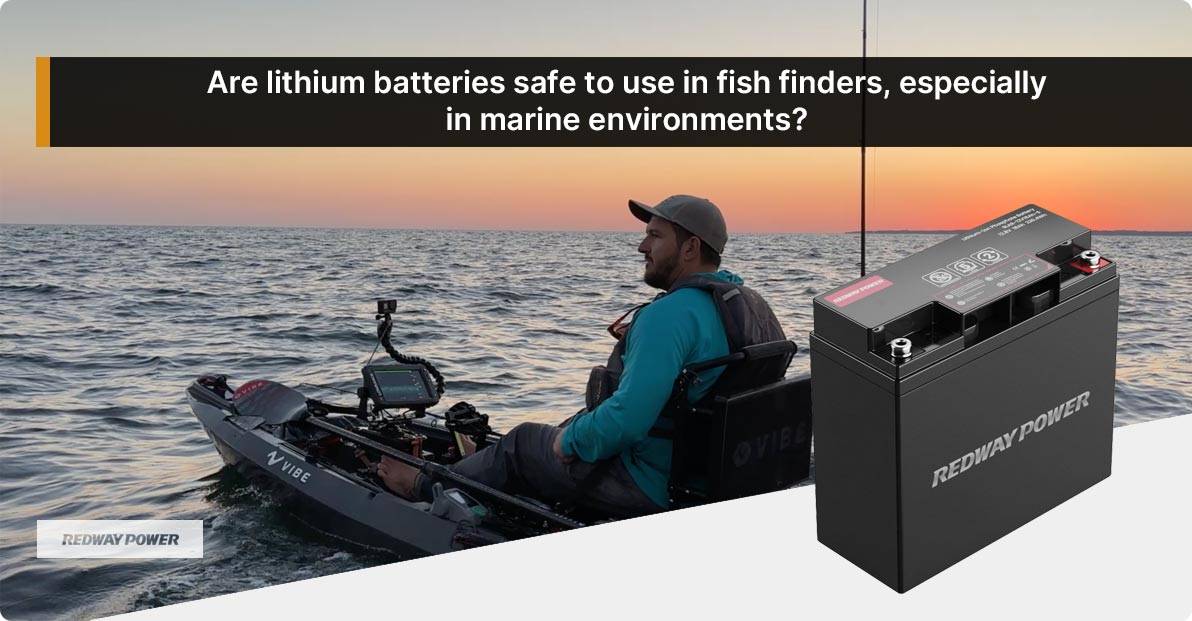
- Longer Lifespan: Lithium batteries, especially LiFePO4 batteries, offer longer lifespans compared to other battery types.
- Enhanced Power: These batteries provide enhanced power capabilities for fish finders, ensuring reliable performance.
- Safety and Minimal Maintenance: LiFePO4 batteries are considered safe options due to their stable chemistry and minimal maintenance requirements.
Lithium batteries, particularly LiFePO4 batteries, are safe and beneficial for fish finders. With their longer lifespans, enhanced power capabilities, and minimal maintenance requirements, these batteries provide reliable and efficient power for fish finder applications, even in marine environments.
Can fish finder lithium batteries be recharged using standard chargers?
No, fish finder lithium batteries cannot be recharged using standard chargers. Standard chargers are not compatible with lithium batteries and may not charge them correctly, which can result in damage. It is crucial to use chargers specifically designed for lithium batteries to ensure safe and effective charging.
- Incompatibility: Standard chargers are not designed for lithium batteries and may not charge them correctly.
- Risk of Damage: Using standard chargers can potentially damage lithium batteries if they are not charged properly.
- Use Lithium Battery Chargers: It is essential to use chargers specifically designed for lithium batteries to ensure safe and effective charging.
Fish finder lithium batteries require chargers specifically designed for them. Using standard chargers can be incompatible and may lead to damage. To ensure safe and efficient charging, it is important to use chargers specifically designed for lithium batteries.
How long can a lithium battery typically power a fish finder before needing recharging?
The runtime of a lithium battery for a fish finder before needing recharging can vary based on factors such as battery capacity, fish finder power consumption, and usage conditions. It is advisable to consult the manufacturer’s specifications or user reviews for more precise information on the battery’s runtime.
- Battery Capacity: The amp-hour capacity of the lithium battery affects the runtime.
- Fish Finder Power Consumption: The power consumption of the fish finder itself plays a role in determining the battery’s runtime.
- Usage Conditions: Factors like the frequency of use, depth of fishing, and other environmental conditions can impact the battery’s runtime.
The runtime of a lithium battery for a fish finder before needing recharging can vary based on factors such as battery capacity, fish finder power consumption, and usage conditions. To obtain accurate information on the battery’s runtime, it is recommended to consult the manufacturer’s specifications or user reviews.
How can you calculate the energy needs for your fish finder based on battery capacity and usage?
To calculate the energy needs for your fish finder, multiply the average power consumption by ten to determine the minimum battery capacity required. For example, if the average power consumption is 0.8 Amps, a minimum battery capacity of 8 Amp-hours (Ah) would be suitable.
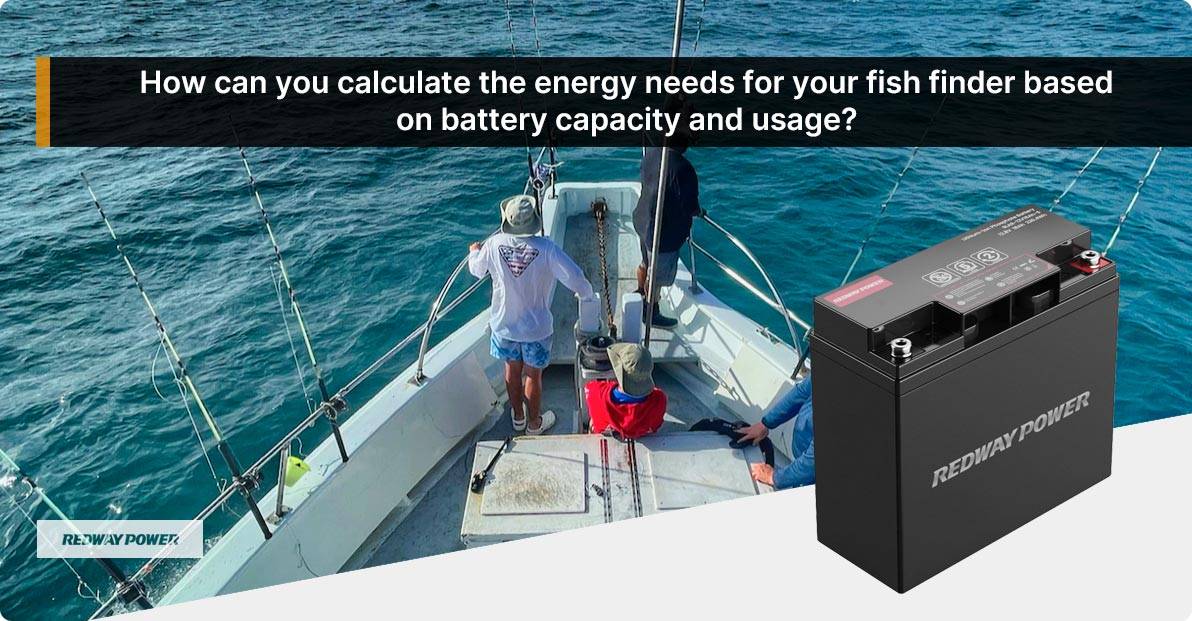
- Rule of Thumb: Multiply the average power consumption of the fish finder by ten.
- Minimum Battery Capacity: The result of the multiplication determines the minimum battery capacity needed.
- Example: If the average power consumption is 0.8 Amps, a minimum battery capacity of 8 Amp-hours (Ah) is recommended.
By using a simple rule of thumb to calculate the energy needs based on average power consumption, you can determine the minimum battery capacity required for your fish finder. This calculation ensures that you have an appropriate battery capacity to power your fish finder for your desired usage duration.
What key features and benefits should you look for in a fish finder battery?
When choosing a fish finder battery, consider key features and benefits. Look for a battery with sufficient capacity for runtime, ensuring it lasts throughout your fishing trips. Portability is important for easy transportation, while durability ensures the battery can withstand the elements. By considering these factors, you can select a fish finder battery that meets your specific needs and enhances your fishing experience.
- Capacity for Sufficient Runtime: Look for a battery with adequate capacity to provide sufficient power throughout your fishing trips.
- Portability: Consider the battery’s size and weight for easy transportation, especially if you fish in different locations.
- Durability: Choose a battery that can withstand the elements and potential rough handling during fishing activities.
When choosing a fish finder battery, consider features like capacity, portability, and durability. By selecting a battery that offers sufficient runtime, easy portability, and durability, you can enhance your fishing experience and ensure reliable power for your fish finder.
What are the pros and cons of using sealed lead-acid batteries for fish finders?
Sealed lead-acid batteries are a popular choice for fish finders due to their maintenance-free operation and cost-effectiveness. These batteries require little to no maintenance and provide reliable performance. With their wide availability and proven track record, sealed lead-acid batteries are a practical and reliable power source for fish finders.
While sealed lead-acid (SLA) batteries have some drawbacks for fish finders, such as their heavier weight and shorter lifespan, they can still be a viable option depending on specific needs. SLA batteries may require more maintenance and have a slower charging time compared to other battery options.
What are the advantages of using lithium batteries in fish finders compared to traditional battery types?
Lithium-ion batteries offer several advantages over traditional battery types when used in fish finders. They have higher specific energy and energy density, providing longer usage time. Lithium-ion batteries are more efficient, delivering a higher energy output for a given capacity. With a longer cycle life and lower cost, they are a reliable and cost-effective choice for fish finder applications.
- Higher Energy Density: Lithium-ion batteries offer higher energy density, allowing for longer usage time in fish finders.
- Improved Efficiency: These batteries deliver a higher energy output for a given capacity, ensuring efficient power usage.
- Longer Cycle Life and Lower Cost: Lithium-ion batteries have a longer cycle life and lower cost, making them a reliable and cost-effective choice for fish finder applications.
Lithium-ion batteries provide several advantages over traditional battery types in fish finders, including higher energy density, improved efficiency, longer cycle life, and lower cost. With their superior performance and cost-effectiveness, lithium-ion batteries are an excellent choice for powering fish finders and ensuring optimal performance during fishing activities.
Inquiry Now














